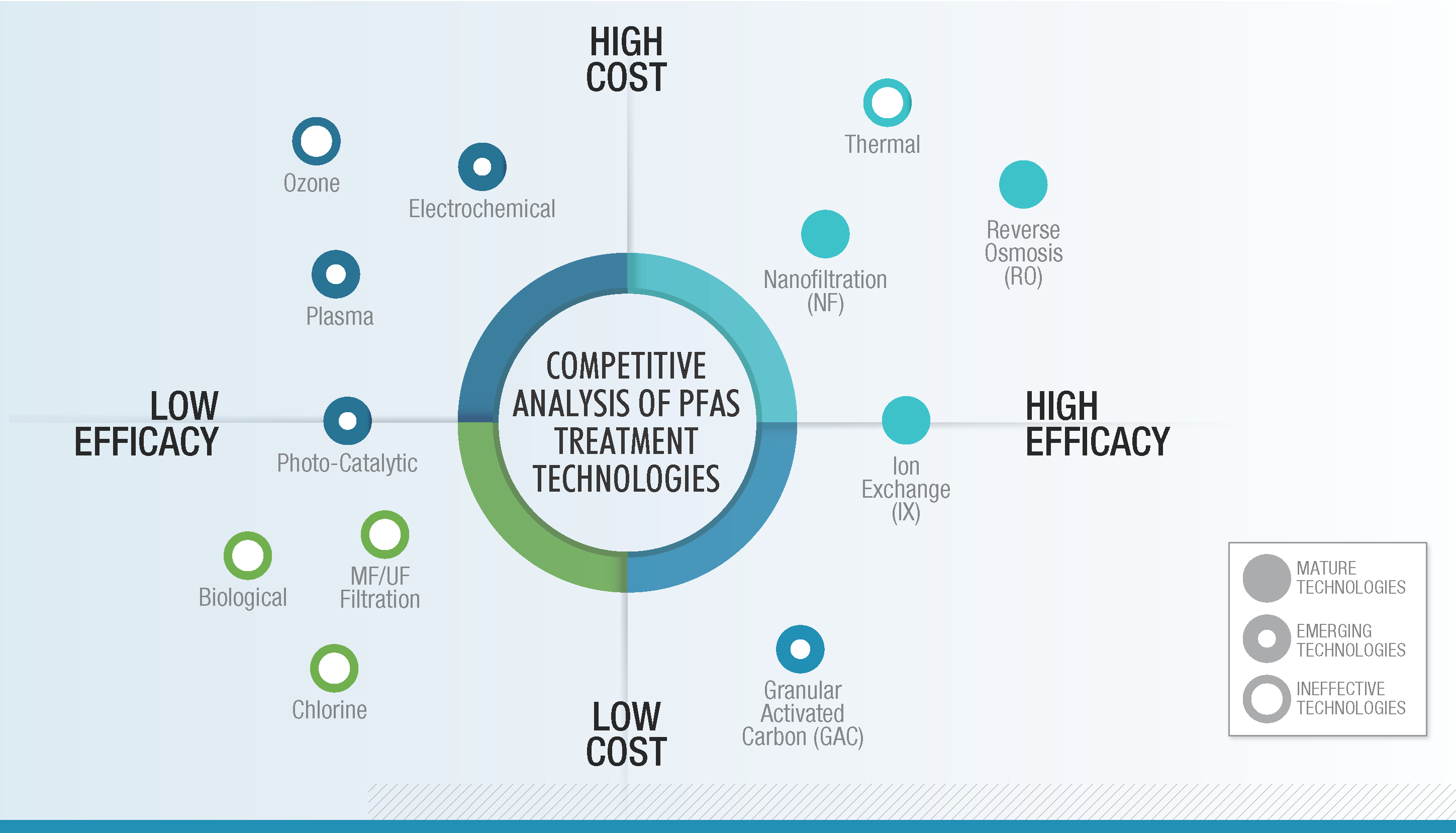

Kyle Thompson
Carollo
Per- and polyfluoroalkyl substances (PFAS) are ubiquitous, including detectable amounts typically in the parts per trillion (ppt) range in wastewater effluent and parts per billion (ppb) range in solids. The US EPA plans to publish ambient water quality human-health-based criteria for perfluorooctanoic acid (PFOA) and perfluorooctane sulfonic acid (PFOS) by Fall 2024.
The EPA also plans to finalize their risk assessment for PFOA and PFOS in biosolids by Winter 2024. This risk assessment could serve as the basis for limits on PFOA and PFOS in biosolids in the following years. These forthcoming standards could have widespread impacts on wastewater utilities.
PFAS manufacturers phased out PFOA and PFOS production in the USA by 2015. Nevertheless, the PFAS sampling ordered by the California State Water Resources Control Board in 2020 revealed many outliers in the PFOA and PFOS concentrations, indicating the presence of unidentified PFAS sources in certain collection systems.
Tracking down and mitigating these sources would be the first step in proactively minimizing or eliminating these chemicals and complying with upcoming regulatory provisions. Source control would be more cost-effective and environmentally just approach than treatment.
Our team developed PFAS source tracking guidance as part of the Water Research Foundation (WRF) Project #5082: Investigation of Alternative Management Strategies to Prevent PFAS from Entering Drinking Water Supplies and Wastewater. This guidance is outlined in the following seven steps. The complete guidance will be available on the WRF website in early 2023.
Make a Monitoring Plan. Plan ahead. For example, samples collected at the same time can provide more insight about potential sources than the same number of samples collected over a long period (e.g., months).
Identify Potential Sources. Sources may include:
Collect and Analyze Samples. It is best practice to collect field blanks and change gloves between each sample. Multiple EPA mass spectrometry methods can provide accurate and precise data for a large number of individual PFAS.
Interpret Results. If samples were collected at locations with known flow, a mass balance can paint a clear picture of major sources. Strong correlations between individual PFAS concentrations at different sites can indicate similar sources.
Confirm Results. Resampling can reveal the range of PFAS concentrations, reveal time-based patterns, or detect intermittent sources. Sampling other water types or media near the detection can confirm pathways such as groundwater inflow & infiltration.
Mitigate Sources. Initially, inform the owner of the point source about the PFAS in good faith, assuming they were unaware and would like to be good stewards of the local environment. Collaborate on a PFAS management plan or further monitoring. Resort to point source treatment enforcement through local limits only if needed.
Let the public and regulators know about the proactive source-tracking you are doing. Advocate for essential uses only for PFAS.
Learn more about Carollo’s PFAS expertise on their website.
Sponsored. Thank you Carollo for supporting our PFAS coverage.